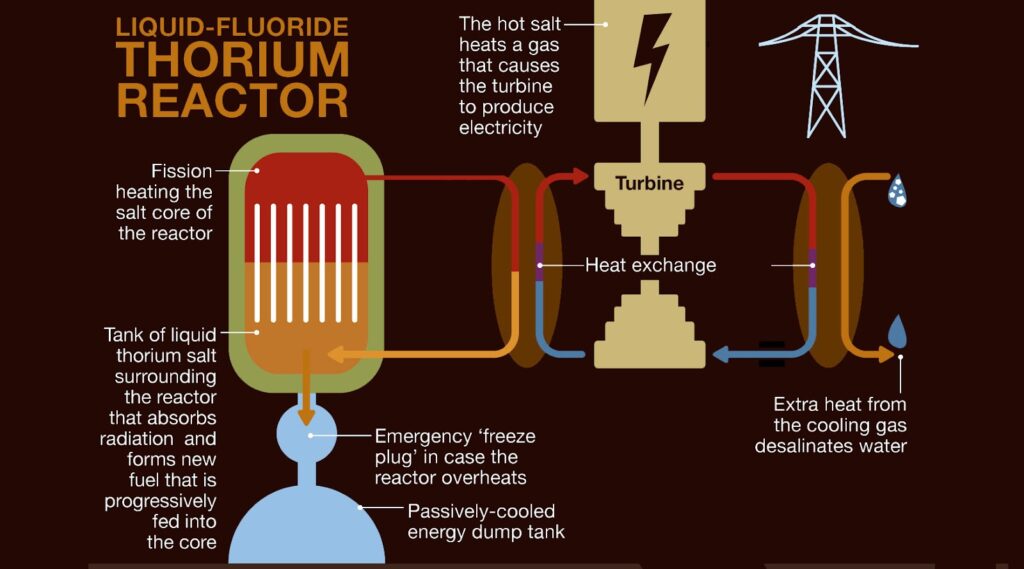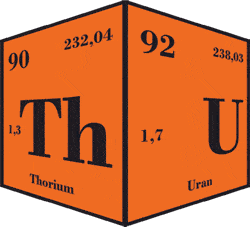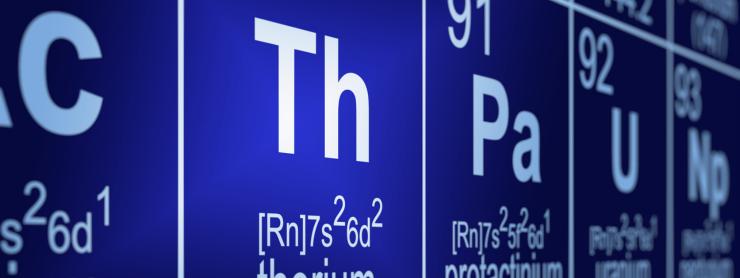The call for aggressively transforming our energy system has been getting progressively louder recently. With clean energy tech evolving rapidly, the strangling grip of the fossil fuel industry on our economy never more obvious, and the ominous shadow of climate change bearing down on humanity, the time is prime for radical change.
The usual suspects (solar and wind) are oft referred to as the likely replacements for our current oil addiction, but even the “clean” energy tech has its issues, from the environmental impacts of mining materials for solar cells and batteries to the question of having adequate power-harnessing and storage capacities to meet our growing energy needs.
Nuclear, however, seems to be the proverbial bone of contention in the debate for “power”; even hardcore progressives, united on most other high priority issues, seem bitterly divided on its feasibility.
Some believe traditional nuclear power is the only practical bridge to our future energy production needs, while many are skeptical because of the severe drawbacks… But what if the ‘3 Mile Isle style’ nuclear power variety we environmentalists have grown to know and love isn’t the only energy-producing nuclear fission game in town?

Enter Thorium-Based Nuclear Power
Thorium-based power generation is fueled primarily by the nuclear fission of the isotope uranium-233, produced from the fertile element thorium. Reactors that use thorium are operating on what’s called the thorium-uranium (Th-U) fuel cycle. The vast majority of existing or proposed nuclear reactors use enriched uranium (U-235) or reprocessed plutonium (Pu-239) as fuel, in the uranium-plutonium cycle.
In layman’s terms, our current nuclear energy production systems are quite inefficient, creating excessive toxic and weaponize-able waste. Thorium energy may have the potential to alleviate these concerns and others.
Although you may not have heard of thorium power until recently, it’s not a new concept. In fact, the technology (in theoretical applications) has been available for half a century. So what, you might ask, is the big deal with Thorium, and why the hell is it just now entering the discussion?
To answer the first question, consider that current nuclear power generation in the US produces thousands of metric tons of radioactive waste per year, which remains radioactive for tens of thousands of years and is stored underground throughout the country at tremendous cost and risk to Americans. When you add in the ever-increasing nuclear catastrophe potential that present plutonium-powered power plants pose as climate change enhanced natural disasters bear down- we’ve got one heck of a good reason to consider any and every option at our disposal- regardless, and in spite of, “how much ‘money’ it will cost.”
Thorium nuclear power, it seems, possesses few of these drawbacks, yet all of the benefits of traditional nuclear – and then some.

The Good:
-Liquid Fluoride Thorium (Molten Salt) Reactors could potentially act as “garbage disposals” for current waste and weapons grade plutonium.
-The active and spent fuel is difficult to weaponize.
-The carbon capture feature transforms carbon into dimethyl ether/ethanol, which could replace gasoline and diesel, power our gas vehicles now, and eliminate future fossil fuel extraction.
-TMSR waste produces clean water, which is a solution to another crisis we’ve got on deck.
-Neither the reactors nor fuel require cooling or high pressure, making thorium far safer than current uranium-plutonium nuclear production processes.
-Thorium is far more abundant and accessible than uranium.
-Uncertainty. Thorium is relatively untested on a large scale, and few public resources have been invested into figuring it out, as corporate profit has been the priority for energy investors (rather than people, peace and planet).
-Cost. High startup, maintenance, and ‘licensing’ (U.S.) costs are, by far, the biggest obstacles.
And this is where MMT comes in- the idea that we can make massive large scale investments of resources for the betterment and survival of our civilization; and the idea that not only can we “afford” it, but we can’t afford not to do it at this point.
As the ravages of climate change rapidly approach, we need to collectively understand that it’s going to take a monumental concerted effort on our part to even have a chance at weathering the coming storms. We need to move past the selfishness and greed plaguing our socioeconomic infrastructure, and aggressively fund solutions like energy system transformation with full concern for humanity and very little concern for how many dollars it may cost the federal government (us). That in a nutshell is the MMTers perspective: real resources are what matter, not money.
Answering the second aforementioned question is a bit more infuriating when you get a little further down the thorium rabbit hole.
The Ugly:
To understand why thorium-based power, in spite of the plethora of benefits and few downsides, hasn’t even been part of the energy discussion over the last several decades, we have to go back to Oak Ridge Laboratory and the work of Dr. Alvin Weinberg, where from 1965-69 he and his team oversaw an operational TMS Reactor. In short, the Nixon administration was given the R&D data on the plutonium and thorium nuclear trials at Oak Ridge Labs, geared toward determining the future path of nuclear energy in the US: would they go with plutonium (light water reactor, less stable, less efficient, better for weaponry) or thorium (molten salt reactor, more stable, more efficient, worse for weaponry)?
As we’re all well aware, Nixon chose plutonium nuclear over thorium; and subsequently buried the thorium research. So if you didn’t have enough reasons to hate Dick Nixon’s fascist guts already, you can add the tons of toxic waste poisoning our lands and abundance of nuclear weapons in the world today to his résumé of atrocities.
The potential for thorium nuclear power to almost immediately end our reliance on fossil fuels provides real hope that we can combat one of the trickiest issues of our time: energy demands vs environmental detriment.
Just imagine if we could answer the “how do we pay for it” question and move on to the construction and implementation phase. Imagine “what it would be like” if our federal government was the issuer of the currency and could literally buy anything it wants- like labor, materials, and brainpower to start building thorium power plants. (see MMT)
Without getting too deep into the web of the corporate monopolization of our fuel/energy systems, our federal government isn’t going to use our public purse for massive investment in transforming our energy grid for the same reason they won’t do it with health care: corruption and capitalism.
We’d better get on board with thorium (and/or other sustainable and viable energy sources)- and quickly, like economic powerhouses India and China, who have been investing in thorium energy of late; or we’re going to run out of time before the planet is completely on fire and we’re extinct.
Clearly I couldn’t cover all the intricacies and nuance of thorium nuclear power in this brief introduction article, but this is something we should be developing and investing in for a multitude of reasons. If you have any interest in learning more about this intriguing technology, start here, (and here), and for God’s sake… LEARN MMT.
Our survival depends on it.
Stay vigilant, Comrades.


Brilliant piece, Comrade.
The world *needs* to focus on alternative energies, and it looks like thorium could be a more viable solution to meet increasing demands. Especially when compared to the harmful inefficiencies of some of our current sources.
The waste byproduct being clean water is such a game changer.
Thank you for your work here.